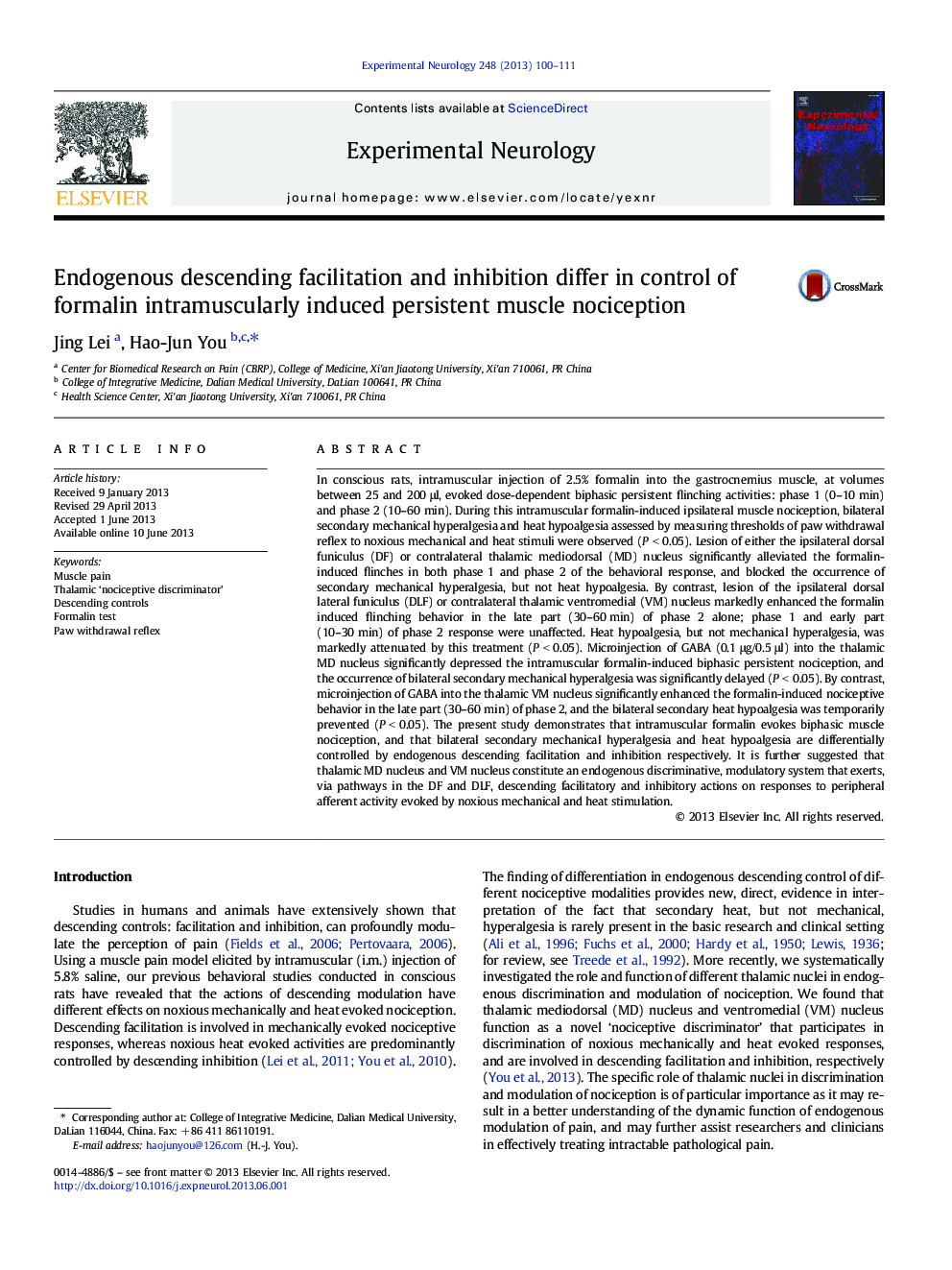| Article ID | Journal | Published Year | Pages | File Type |
|---|---|---|---|---|
| 6018046 | Experimental Neurology | 2013 | 12 Pages |
Abstract
In conscious rats, intramuscular injection of 2.5% formalin into the gastrocnemius muscle, at volumes between 25 and 200 μl, evoked dose-dependent biphasic persistent flinching activities: phase 1 (0-10 min) and phase 2 (10-60 min). During this intramuscular formalin-induced ipsilateral muscle nociception, bilateral secondary mechanical hyperalgesia and heat hypoalgesia assessed by measuring thresholds of paw withdrawal reflex to noxious mechanical and heat stimuli were observed (P < 0.05). Lesion of either the ipsilateral dorsal funiculus (DF) or contralateral thalamic mediodorsal (MD) nucleus significantly alleviated the formalin-induced flinches in both phase 1 and phase 2 of the behavioral response, and blocked the occurrence of secondary mechanical hyperalgesia, but not heat hypoalgesia. By contrast, lesion of the ipsilateral dorsal lateral funiculus (DLF) or contralateral thalamic ventromedial (VM) nucleus markedly enhanced the formalin induced flinching behavior in the late part (30-60 min) of phase 2 alone; phase 1 and early part (10-30 min) of phase 2 response were unaffected. Heat hypoalgesia, but not mechanical hyperalgesia, was markedly attenuated by this treatment (P < 0.05). Microinjection of GABA (0.1 μg/0.5 μl) into the thalamic MD nucleus significantly depressed the intramuscular formalin-induced biphasic persistent nociception, and the occurrence of bilateral secondary mechanical hyperalgesia was significantly delayed (P < 0.05). By contrast, microinjection of GABA into the thalamic VM nucleus significantly enhanced the formalin-induced nociceptive behavior in the late part (30-60 min) of phase 2, and the bilateral secondary heat hypoalgesia was temporarily prevented (P < 0.05). The present study demonstrates that intramuscular formalin evokes biphasic muscle nociception, and that bilateral secondary mechanical hyperalgesia and heat hypoalgesia are differentially controlled by endogenous descending facilitation and inhibition respectively. It is further suggested that thalamic MD nucleus and VM nucleus constitute an endogenous discriminative, modulatory system that exerts, via pathways in the DF and DLF, descending facilitatory and inhibitory actions on responses to peripheral afferent activity evoked by noxious mechanical and heat stimulation.
Keywords
Related Topics
Life Sciences
Neuroscience
Neurology
Authors
Jing Lei, Hao-Jun You,
